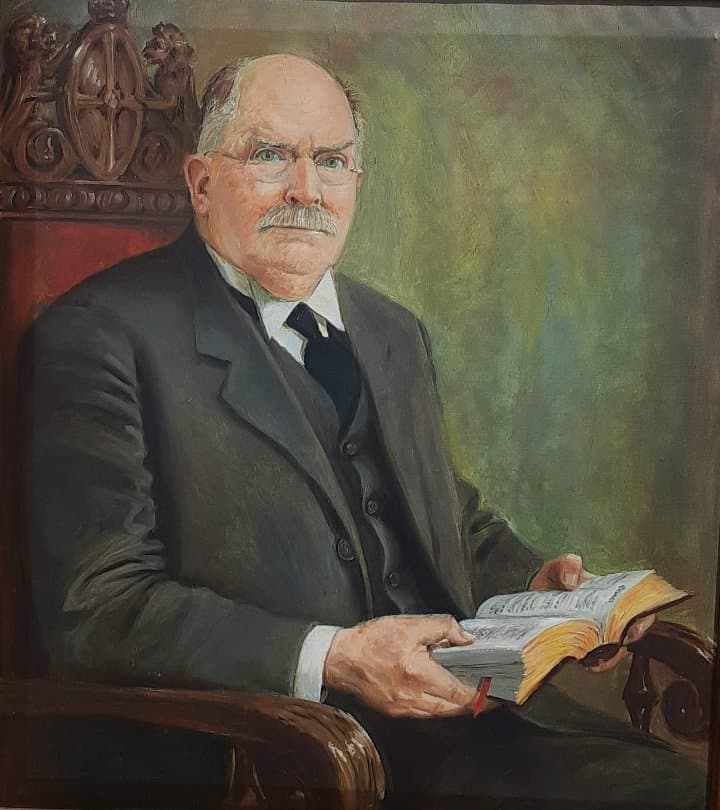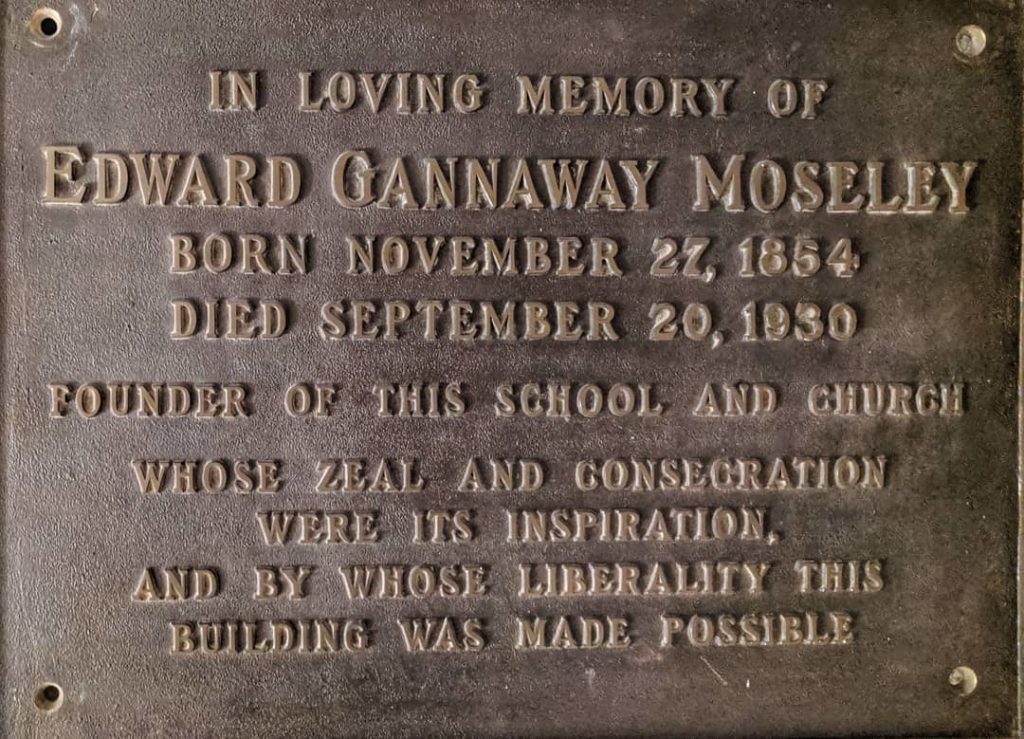 The congregation that would eventually become Moseley Memorial Methodist Church got its start in the home of E.Y. Smith on Cabell Street. It was here that E.G. Moseley, a prominent layman in the church, began conducting prayer meetings. When those meetings were moved from Tuesday Evening to Sunday afternoon, they began to take in a larger audience, and so Mr. Moseley arranged for the use of the old Trowbridge Factory on Cabell Street. Having acquired the use of the building free of rent or other fees, he consequently had funds to put into the repairing the building and putting it into serviceable condition. 105 people attended the first official Sunday School on June 1, 1893 when the organization was given the name of the Cabell Street Tabernacle. The factory was purchased in December of that year as a permanent location, but by 1895, a more suitable building was desired and a committee to raise the money was formed. The Sunday School, under Mr. Moseley’s management, grew to become the largest Methodist Sunday School in the south. In 1923, a movement to build a larger building for what had, by then come to be called Cabell Street Methodist Church began, resulting in the construction of an edifice on Berryman Avenue and Colquhoun Streets (601 Berryman Ave), designed by celebrated architect J. Bryant Heard, a fellow Methodist and member of Main Street Methodist Church.
The congregation that would eventually become Moseley Memorial Methodist Church got its start in the home of E.Y. Smith on Cabell Street. It was here that E.G. Moseley, a prominent layman in the church, began conducting prayer meetings. When those meetings were moved from Tuesday Evening to Sunday afternoon, they began to take in a larger audience, and so Mr. Moseley arranged for the use of the old Trowbridge Factory on Cabell Street. Having acquired the use of the building free of rent or other fees, he consequently had funds to put into the repairing the building and putting it into serviceable condition. 105 people attended the first official Sunday School on June 1, 1893 when the organization was given the name of the Cabell Street Tabernacle. The factory was purchased in December of that year as a permanent location, but by 1895, a more suitable building was desired and a committee to raise the money was formed. The Sunday School, under Mr. Moseley’s management, grew to become the largest Methodist Sunday School in the south. In 1923, a movement to build a larger building for what had, by then come to be called Cabell Street Methodist Church began, resulting in the construction of an edifice on Berryman Avenue and Colquhoun Streets (601 Berryman Ave), designed by celebrated architect J. Bryant Heard, a fellow Methodist and member of Main Street Methodist Church.
 Toward the construction of the building, Mr. Moseley personally contributed half the cost. At the time the church was built, “all-of-a-piece” in early 1930, it was proposed the name be changed to Moseley Memorial Methodist Church, but Mr. Moseley objected to such an ostentatious recognition. When Mr. Moseley died from a stroke later that year, the Church moved once more to change the name. This time there were no objections. The church operated for 126 years before closing its doors in 2019 due to dwindling membership and lack of funding. The building is now the home of The Remnant Church of Power.
Toward the construction of the building, Mr. Moseley personally contributed half the cost. At the time the church was built, “all-of-a-piece” in early 1930, it was proposed the name be changed to Moseley Memorial Methodist Church, but Mr. Moseley objected to such an ostentatious recognition. When Mr. Moseley died from a stroke later that year, the Church moved once more to change the name. This time there were no objections. The church operated for 126 years before closing its doors in 2019 due to dwindling membership and lack of funding. The building is now the home of The Remnant Church of Power.
To learn more about E.G. Moseley and his own home, see the companion post.
Sources include:
Gary Grant
DHS Holiday Tour archives, 2010
The Bee, “Churchman Victim of Paralysis” 20 Sep 1930
